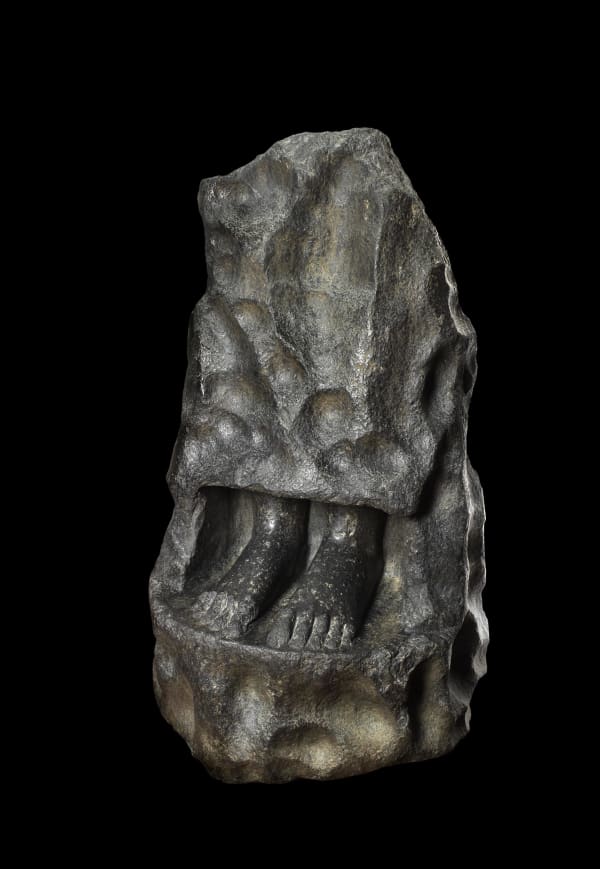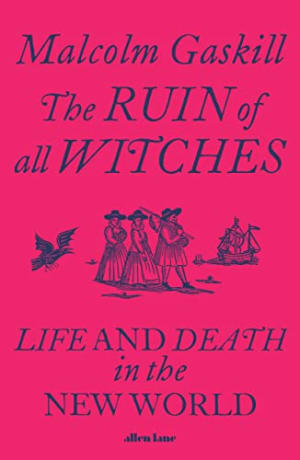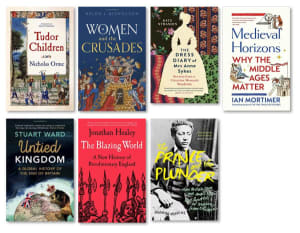Names have power. If you know a name you know a person. Conversely those countless individuals throughout history whose names we have forgotten are without form and void. But when we then say let there be... Dwight, or Moses, or Sargon - there they are: fully formed and alive.
I have always been fascinated by the question: who is the earliest person whose name we know? Who is that first person to step forward from the shadows of time and say “Hi, it’s me”?
The first at last
Amanda Podany introduces us to someone who might just be this person in her new book Weavers, Scribes, and Kings: A New History of the Ancient Near East. His name is Kushim. Hi Kushim, I’m very pleased to finally meet you!
To give you an idea how long ago Kushim lived, imagine you are standing first in a line (looking studious: 👨🎓). Next to you is one of your parents, and next to them is one of their parents... and so on until the dawn of history. This line of ancestors might look a bit like this:1
| Now👨🎓🧑🧑🧑🧑🧑🧑🧑🧑🧑🧑🧑🧑🧑🧑🧑🧑🧑🧑🧑🧑🧑🧑🧑🧑🧑🧑🧑🧑🧑🧑🧑🧑🧑🧑🧑🧑🧑🧑🧑| 1000 CE🧑🧑🧑🧑🧑🧑🧑🧑🧑🧑🧑🧑🧑🧑🧑🧑🧑🧑🧑🧑🧑🧑🧑🧑🧑🧑🧑🧑🧑🧑🧑🧑🧑🧑🧑🧑🧑🧑🧑🧑| Year 0🧑🧑🧑🧑🧑🧑🧑🧑🧑🧑🧑🧑🧑🧑🧑🤴🧑🧑🧑🧑🧑🧑🧑🧑🧑🧑🧑🧑🧑🧑🧑🧑🧑🧑🧑🧑🧑🧑🧑🧑| 1000 BCE 🧑🧑🧑🧑🧑🧑🧑🧑🧑🧑🧑🧑🧑🧑🧑🧑🧑🧑🧑🧑🧑🧑🧑🧑🧑🧑🧑🧑🧑🧑🧑🧑🧑🧑🧑🧑🧑🧑🧑| 2000 BCE 🧑🧑🧑🧑🧑🧑🧑🧑🧑🧑🧑🧑🧑🧑🧑🧑🧑🧑🧑🧑🧑🧑🧑🧑🧑🧑🧑🧑🧑🧑🧑🧑🧑🧑🧑🧑🧑🧑🧑 | 3000 BCE🧑🧑🙋♂️🧑🧑🧑🧑🧑🧑🧑🧑🧑🧑🧑🧑🧑🧑🧑🧑🧑 .
Do you see the ancestor 2 🙋♂️waving to you near the end of the line? This is Kushim greeting you soon after the invention of writing from what is now Iraq.3
6 / 11ths of history
Weavers, Scribes, and Kings: A New History of the Ancient Near East introduces us to a whole cast of ancient Mesopotamians from 3500 BCE the end of the ancestor line above) up until 350 BCE when Alexander the Great was born (who I have marked with 🤴 about halfway through the line-up). As you can see the book stretches over a vast amount of time, covering more than half of your historical ancestors. But it does this in an intimate way, through the stories of Kushim and others.
Uruk - the first city
So who was this guy? Kushim lived in Uruk in about 3000 BCE. Uruk (google maps location of Uruk) is the earliest city anywhere in the world that we know about. It was in this teeming metropolis of 40,000 people that writing was invented. To begin with signs were used to keep track of goods: this many litres of barley, so many sheep. These signs morphed into representations of sounds and - hey presto! - writing.
A master brewer
Kushim wasn’t a king or high priest, he was instead a sort of Chief Brewing Officer (CBO) for the large temple complex in which he worked. Like any good executive Kushim is unlikely to have got his hands dirty (or wet) actually making the beer - his job was to keep track of all the ingredients needed for making the stuff, and for handing out the jars of booze when they were ready.
The quantities that Kushim was in charge of are pretty staggering - in one delivery that we can track from the clay tablet receipt, Kushim received an incredible 135,000 litres of barley. To help you visualise this: the biggest room in your house might be 5 metres long by 5 metres wide. The barley that Kushim signed for would fill this room completely from floor to ceiling, and another identical room as well.
A jar a day...
The reason that beer was so popular was that it made the otherwise germ infested river water safe to drink, and no doubt taste better too. It wasn’t necessarily strongly alcoholic and was thought of as an important part of a meal.
So Kushim was obviously a powerful, well educated man and a handy person to be friends with. If he had one weakness it was that he wasn’t very good at mathematics! When he was adding up all those big numbers to keep track of his ingredients and beer jars he quite often made mistakes in the totals - perhaps drinking on the job played a part?4
Bringing the past to life
By delving into the records that Kushim left behind Podany helps us to reconstruct what it might have been like to live in those times: with the large centralised temple administrations that must have supported many people, as well as the resident god; the agricultural rhythms that underpinned the city; and the copious beer consumption.
Some of my other favourite characters from the books were:
- Zum, a weaving supervisor in Lagash 2450 BCE
- Tabar-damu, a queen of Ebla in 2300 BCE
- Rishaya, chief musician at Mari, 1850 BCE
- Adad-guppi, the unlikely grandmother to the last (and hopeless) king of Babylon, 600 BCE
This book is a kind of a “micro-macro” history - by shining a spotlight on individual lives through time, it helps build a strong understanding of the entire age in a way that just describing which king did what to whom when wouldn’t.
Look on my works
It is also brilliant at placing the better known figures into context. For example Sargon may be the person in this book who is closest to being a household name. Perhaps you are like me and are aware that he was some sort of empire builder from a long time ago and one of the earliest historical figures, but beyond that it is all pretty fuzzy.
But after reading Weavers, Scribes and Kings I can place him in the broader historical narrative, understand why he was considered a big deal, and also regale my friends and family with juicy titbits such as the fact that Sargon wasn’t his real name:
His name [Sargon] was a fiction. It meant “the king is legitimate” - just the kind of name you’d want if you actually were not a legitimate king at all.
Amanda Podany, Weavers Scribes and Kings
And: despite being one of the all time greats of ancient history we have only nine short inscriptions from the time of his rule that mention him at all - and all of this nine are pretty tangential to his deeds, and just happen to mention his name in passing.5 We also don’t have any contemporary images of him except from this eroded picture of Sargon now in the Louvre, and potentially (Podany speculates) this butchered statue of some ancient feet in the British museum.

Did these feet in ancient times walk on the necks of his defeated foes? Possible Sargon feet © The Trustees of the British Museum
Old news
After reading this book, I was stuck with the enourmously wide range of human experience. Regimes could be cruel and murderous, or could be pious and compassionate - and did not seem to tend to one or the other over time. Most of all I got an impression of expedience: where behaviours and morals were driven by what worked. This feels relevant today in that we shouldn't take our own system of governance for granted; there is nothing that says it has to endure. If we like what we have we need to work hard to maintain it - and hope we don't get swallowed up by a he-who-is-legitimate power hungry neighbour in the meantime.
What is it like to read?
This is a great book to read, the language is simple, clear and informal and really draws you into the story. Archaic jargon is kept to a minimum and every effort is made to make the modern reader feel at home in this ancient world, whether you are a newcomer or have some prior knowledge.
I was also very impressed with how Podany manages to give us an in-depth view of her chosen people, while also keeping in sight the bigger picture covering thousands of years. In short, you get a feel for the wood and the trees.
The fact that this particular wood is rarely visited by popularising historians is all the more reason to get yourself a copy and head in!
Any negatives?
This is one of the best popular history books I have read in a long time, and I genuinely can't identify anything I didn't like about it. It might be worth knowing that this is a very chunky book before you start: 541 pages excluding notes, not the 384 pages referenced on Amazon... but despite this I didn't feel it dragged at any point, and I was hooked until the end.
Conclusion
This is a brilliant “micro-macro” history book that introduces us to ordinary people from thousands of years ago. By invoking their names and investigating the impressions they have left behind, Podany conjures the ancient Mesopotamian world - the greater part of our history - back to life.
I have assumed that every child is born when their parents were exactly 25 years old. I would guess that the average age when giving birth over the last 5,000 years is probably a little younger but my line already seemed long enough... ↩︎
Podany makes the point that Kushim wouldn’t have thought of it in this way - in his worldview he was the tech-savvy modern with his clay tablets and new-fangled wheelbarrow. The way they viewed their own past can be seen through their “King Lists” which showed that before 3000 BCE eight kings had reigned for 385,200 years, followed by a flood and then 23 kings had rules for 23,310 years. This was all history before the invention of writing, which may have contributed towards it being so wildly incorrect. ↩︎
You may be surprised to hear that this man is your ancestor, particularly if you are not from this part of the world. But if we go back so far in time this man will either have no surviving descendants or we will all be his descendents - see genetics and statistics for further details! ↩︎
There is no evidence for Kushim getting drunk at work, this is my own fanciful insertion. But then again there is no evidence for him not getting drunk at work. ↩︎
The reason we know a fair bit about Sargon despite this paucity of direct evidence is that he did set up many self aggrandizing inscriptions, and while the originals have been destroyed or lost, the scribes of subsequent generations copied and recopied them onto clay tablets, which have been found. ↩︎
Book details
(back to top)- Title -
Weavers, Scribes, and Kings : A New History of the Ancient Near East
- Author -
Amanda H. Podany
- Publication date -
December 2022
- Publisher -
Oxford University Press
- Pages -
541
- ISBN 13 -
9780190059040
- Podcast episode -
Thin End of the Wedge: 48. Amanda Podany A New History of the Ancient Near East
- Podcast episode -
Historically Thinking: Episode 286 Weavers Scribes and Kings
- Amazon UK -
- Amazon US -



